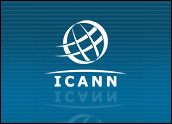
Most corporations, when giving birth to a new product, behave just like parents jumping in frenzy in a maternity ward. This typical hysterical hoopla of the incubation wing is often replaced by a subtler, cubicle behavior and, at times, becomes a subdued Dilbertish-style revolution.
Objects do fly, even though in the corporate setting they are memos or, sometimes, sharp, yet harmless, foamy projectiles. Everyone shares the excitement, and all fights are well intentioned. Everyone wants a successful launch. There is always a good feeling, and everyone is happy.
Naming that new thing is the most critical and extremely controversial part of the innovation cycle.
A Calling Device
Every participant passionately displays sets of arguments and opinions, molding and changing each time in every other round, while that new object of attention behaves almost like an alien, projecting strange vibes, lights and humming sounds. This isn’t a sci-fi project. Just ask any technology company or a bank creating a new credit card, they each have similar out-of-body, extraterrestrial types of experiences.
This is normal when logic leaves the body and the brain drifts in creative space. There’s nothing to fear; these attacks of mild lunacy are what ad agencies are made of. Wow, this means there is now an open season for hunting down a new name.
Without a name, there is no calling device. No customer will ever refer to it or even talk about it — basically, no name, no story; no story no ad campaign; no ad-marketing, no business. Get it? It seems what to call that thing is the most critical issue behind this total incubation strategy, with the initial idea leading all the way to final delivery. So, push.
The reason why corporations want to do this internally is no different than having mother-in-laws team up with distant relatives to name a set of twins. But wait, this time, let’s just go and get them some external naming. Here, we will send in the clowns. Big and small teams are hired to pool names. Thousand of choices later, that thing become the thing. Now we’re getting somewhere.
Sides to the Issue
No matter what the complexity of the innovation or what the size of corporation, this naming issue always has four critical sides.
1) Character: What is this new thing? How and why does it work and why will it change or overcome a hurdle? What are its characteristics and possible personalities?
2) Customers: Who are they and why will they buy it? What are they thinking and how will you attract them? Why will they respond to your name and grasp this innovation?
3) Competition: How will they attack? What are the other confusing names in the market place? How do you get a unique and a distinct name identity to secure a market position?
4) Delivery: How will you tell your side of the story? How will you deliver this message? What must they remember in a name? Why should you protect the name?
This may sound simple and almost boring, so let’s go to the danger zone.
Most new innovations simply die of quick exhaustion as they fail to deliver the precise message of their story. Either the lack of clarity in a name or sending multiple messages that confuse customers will do just that.
Expensive Branding
Sometimes, this is done to please different interests and sometimes in total oblivion to the customer’s perceptions and realities. Promoting totally irrelevant aspects of the name identity or the missing of a distinct name altogether without any logical association with the product itself will never help.
The general perception that expensive branding will always fix the entire name image problem is way off line. Branding is an art; however, the term is loosely used by far too many as a cure for all. Without a proper placement of a clear name identity and a sophisticated naming strategy, branding is a lost cause.
A buyer not only needs to understand the message but also must remember the name and be happy to talk about it. Otherwise, the entire promotion is just an expense. This is how popularity is lost, case studies are shelved, agencies changed and nothing gained.
True, there are thousands of great success stories, and we always start with Yahoo, eBay and Amazon, of the recent past, or Microsoft, Intel of distant past. IBM, GM of the hinder years.
Ah, what about the millions that came so close to success before they ran out money, who just couldn’t finish telling their entire story?
Promotional Hoopla
Telling stories is what advertising and branding does. Some are good, but are more than often plain stories, wrapped only in a short-lived promotional hoopla and without properly structured memory recall devices.
Is this the reason why all car commercials look the same? Why are almost all logos and names so similar? The toll of innovation on the human mind is enormous, as every second some new product is being introduced with a spinning logo and a weird name.
Does it matter if it’s coming from some foreign, unpronounceable land? Irrespective, it’s sitting in front on our screens. The bottom line is, telling an expensive story at the cost of a poor name identity is a disaster in the making. The dilution of name identity is the number-one killer of good innovation, corporate images, Web sites or new services.
The global competition is forcing executives to a deeper understanding of cyber-branding as an art of telling stories, rather than plastering billboards. The power of e-commerce can only be harnessed by designing digital name identities, ready to circumnavigate without language or trademark problems.
Solid Naming Strategy
The reason why these issues aren’t being discussed in detail at branding conferences or being taught at major business schools is still a mystery.
If a good name only costs a fraction of the whole storyboard, then why is it ignored? A corporation will clearly lose its navigation without a solid naming strategy designed under professional guidelines.
Today there are five critical questions that management must ask itself:
1) Is the name global? Prove it.
2) Is the name yours? Own it.
3) Is the name with an identical dot-com? Show it.
4) Is the name easy? Say it.
5) Is the name in trouble? Change it.
Ah, so would this mean naming that thing again?
Naseem Javed, author Naming for Power and also Domain Wars, is recognized as a world authority on global name identities and domain issues. Javed founded ABC Namebank, a consultancy he established a quarter century ago, and conducts executive workshops on image and name identity issues.




















































Social Media
See all Social Media